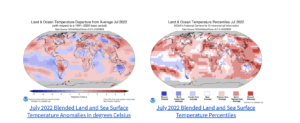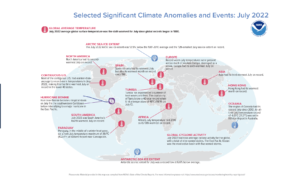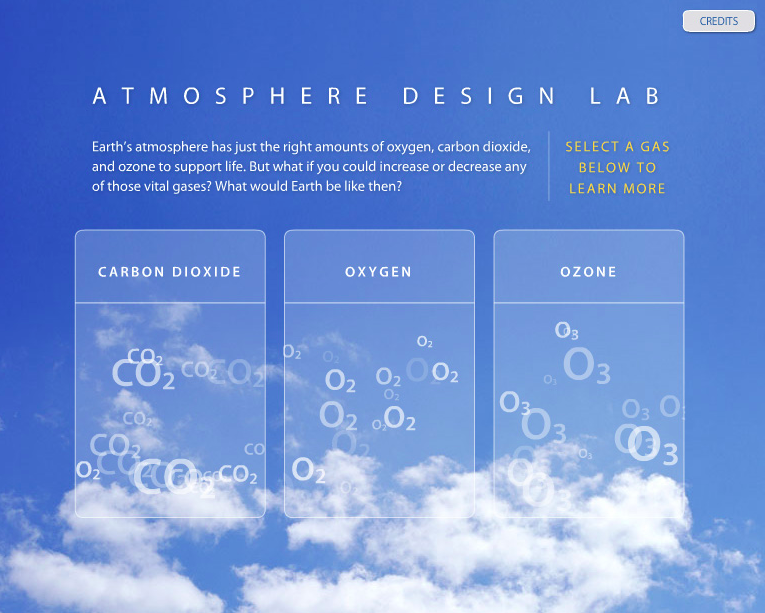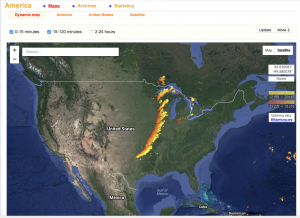This website functions like google earth where you can spin the globe around, zoom in, and zoom out. However, instead of displaying satellite images, the earth’s surface displays patterns of wind, weather, and ocean movement. Using this site one can look at the live wind patterns such as jet streams and identify large ocean currents. Similarly, users can use the site to investigate trends in temperature seeing both the latitudinal and continental effects on temperature. Finally, this site can also be used to display concentrations of particulate matter and chemical pollutants. for example, users are able to see clear trends of higher CO2 levels in population centers.
Overall this site provides an easy to use interface to visualize and explore trends in abiotic factors including the atmospheric and hydrosphere conditions. This site could be particularly useful as a teaching tool. Teachers could ask their students to identify and screenshot areas of the world that exhibit the trends and patterns that are being taught, such as those related to the Coriolis effect, unequal warming, particulate matter, or ocean currents.











